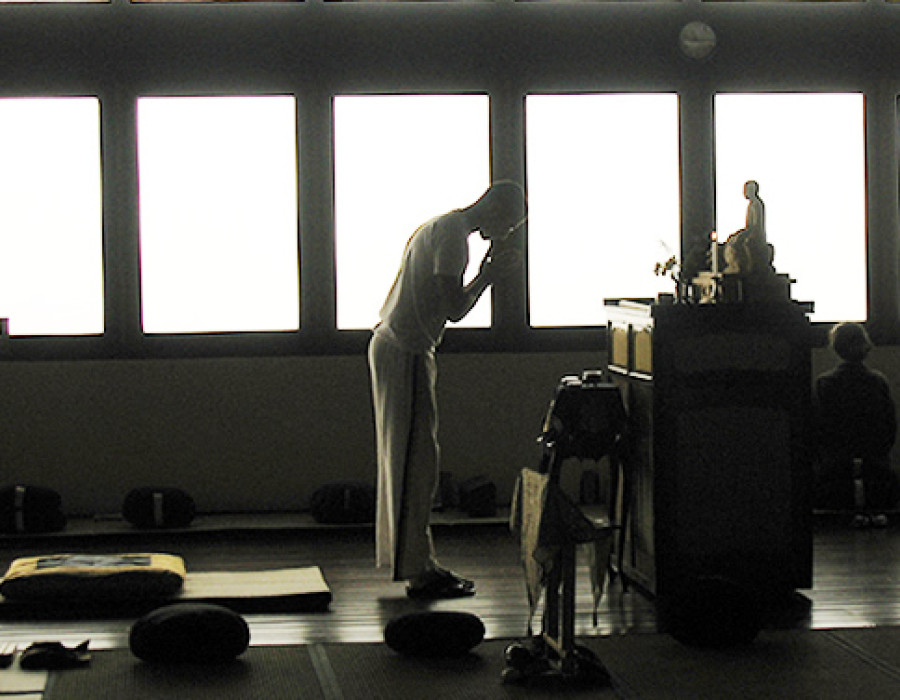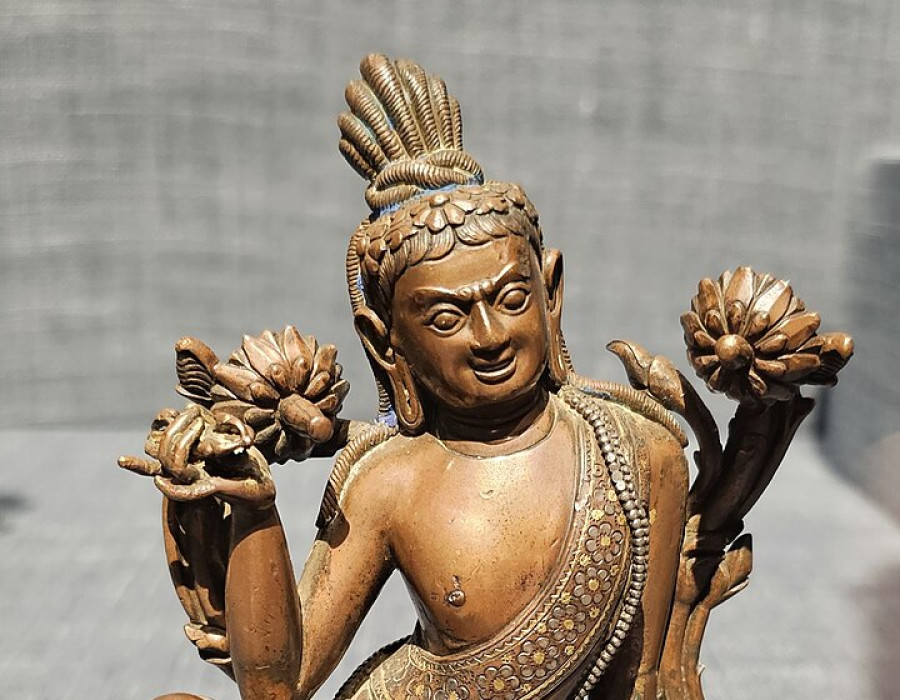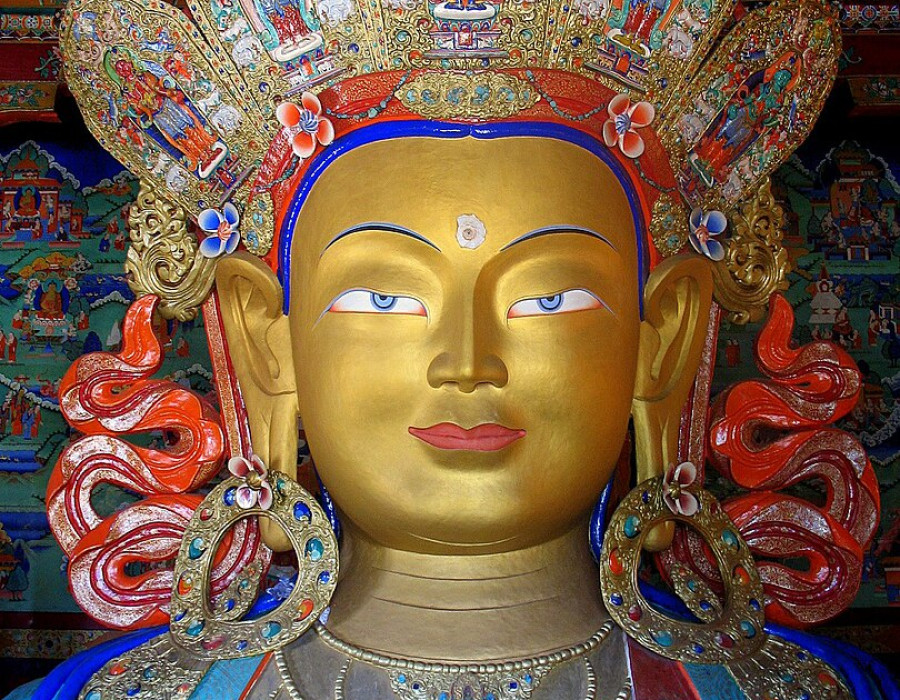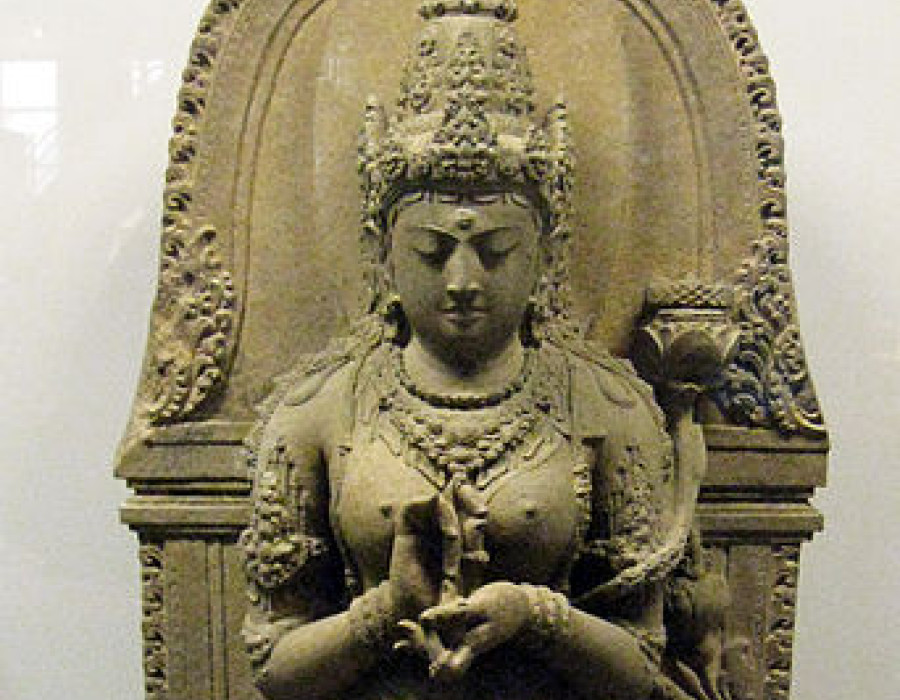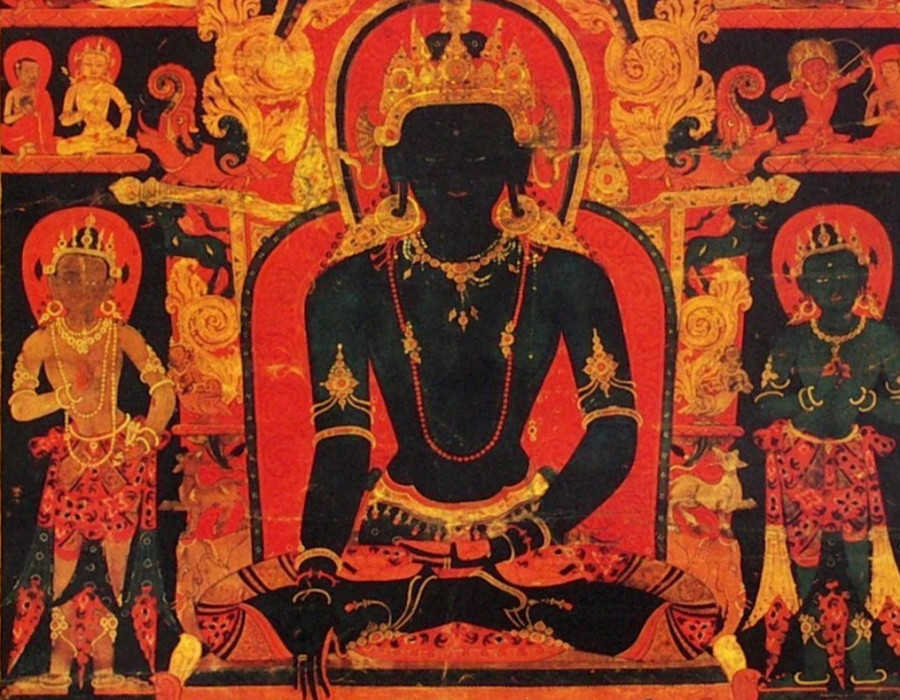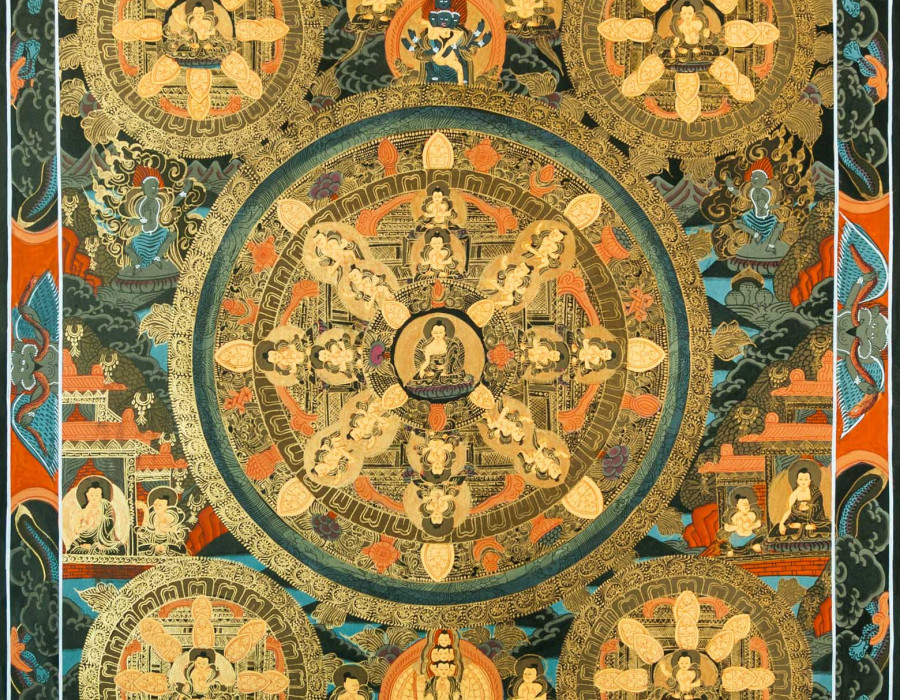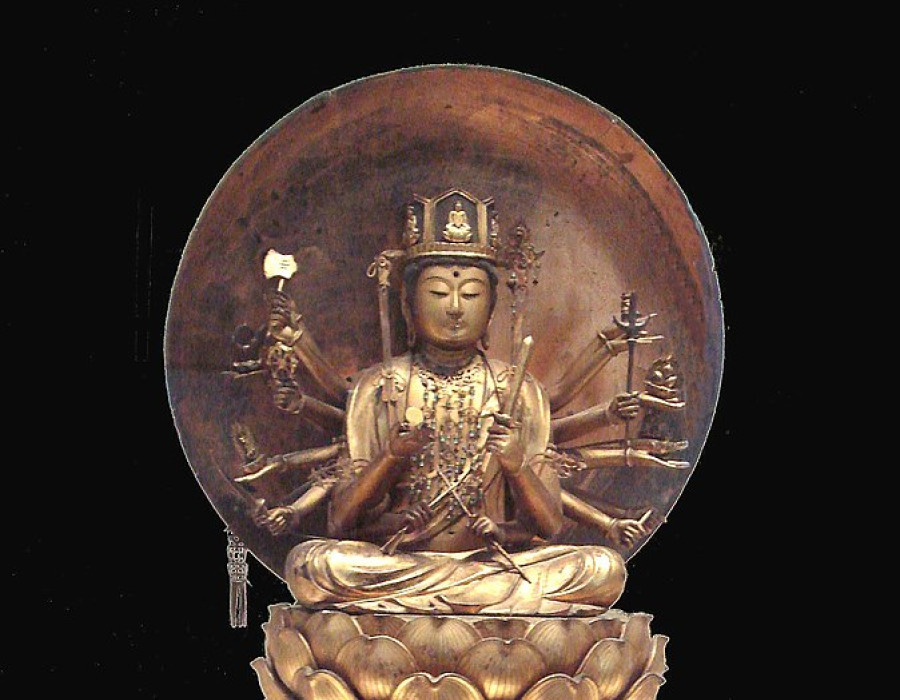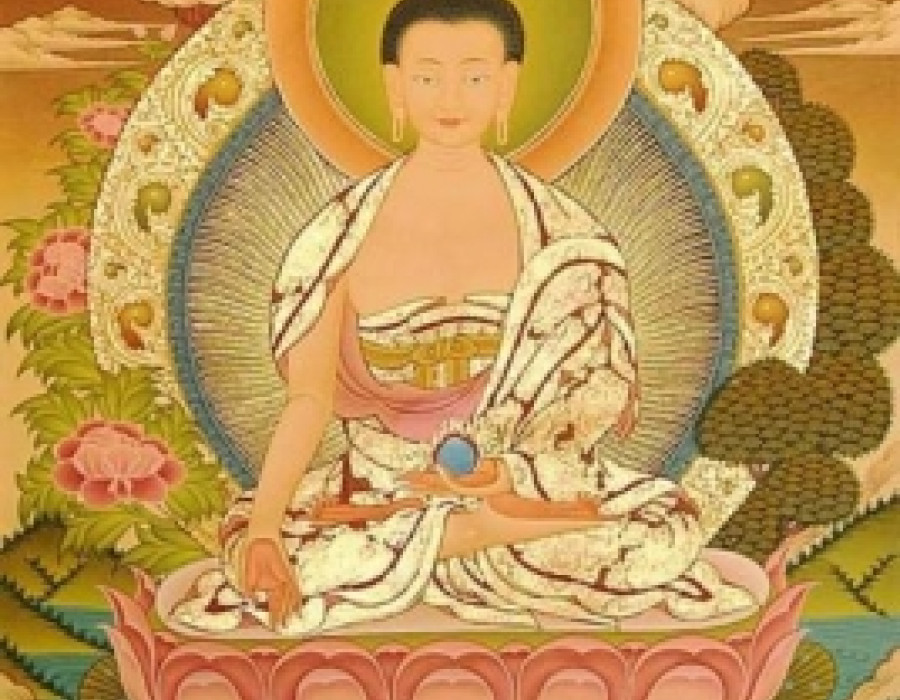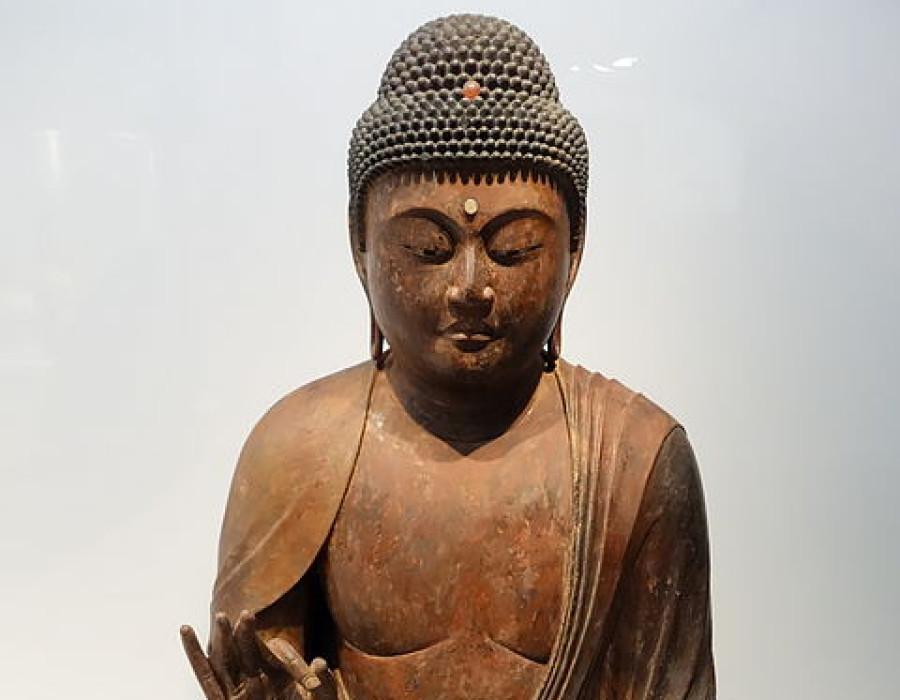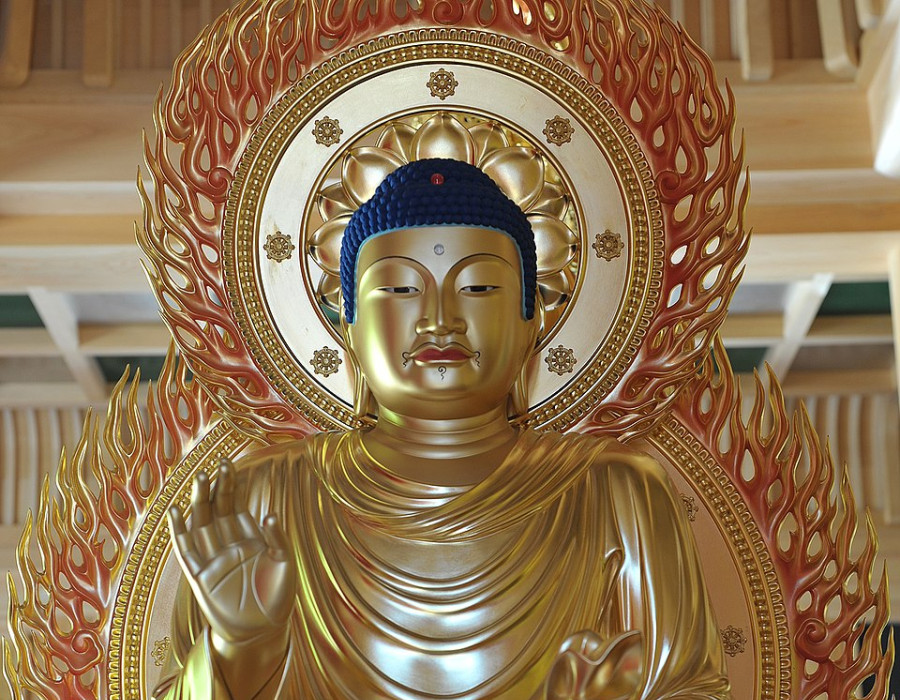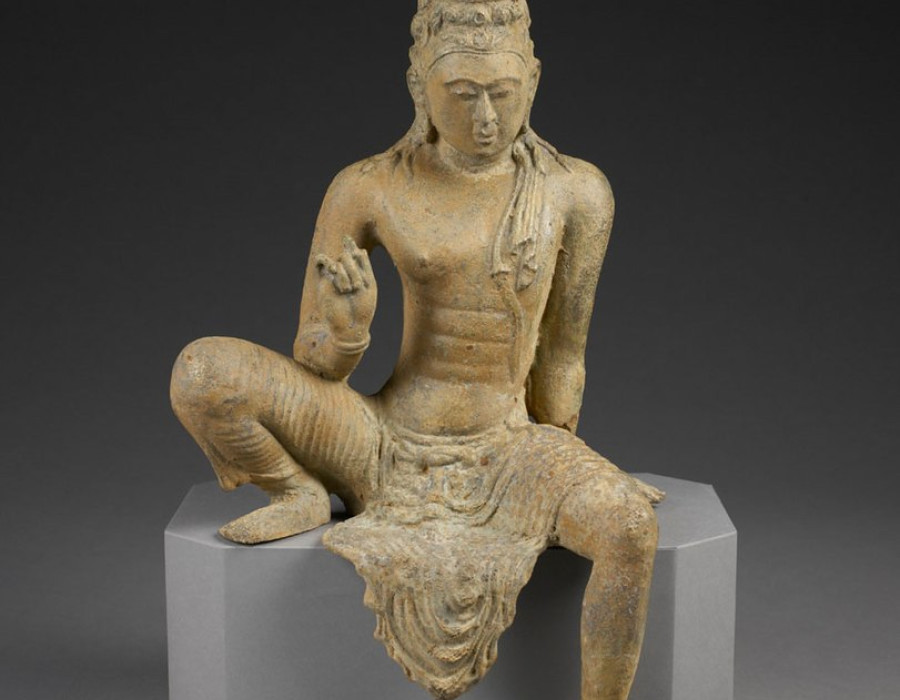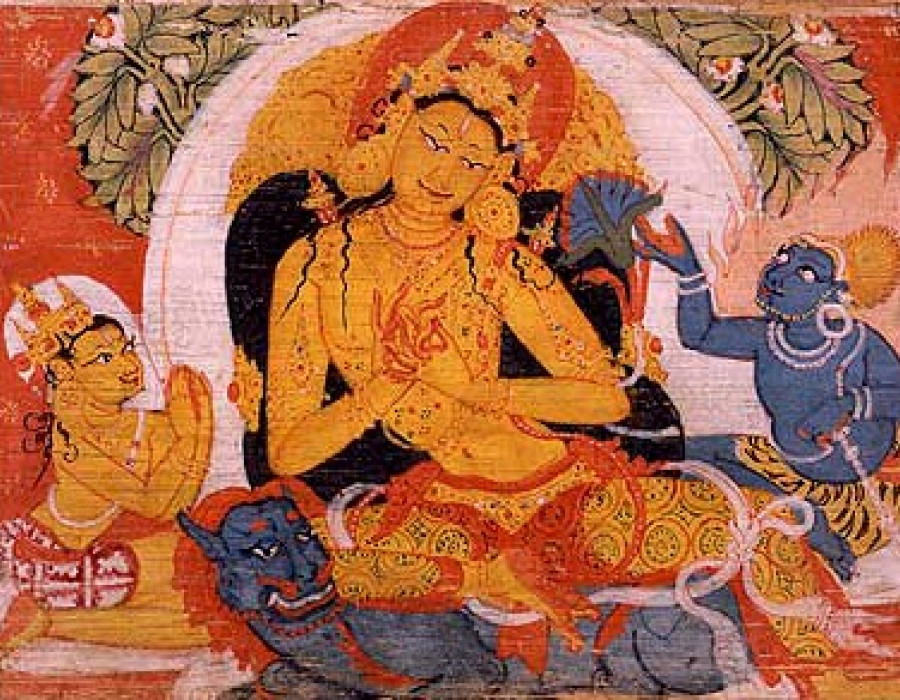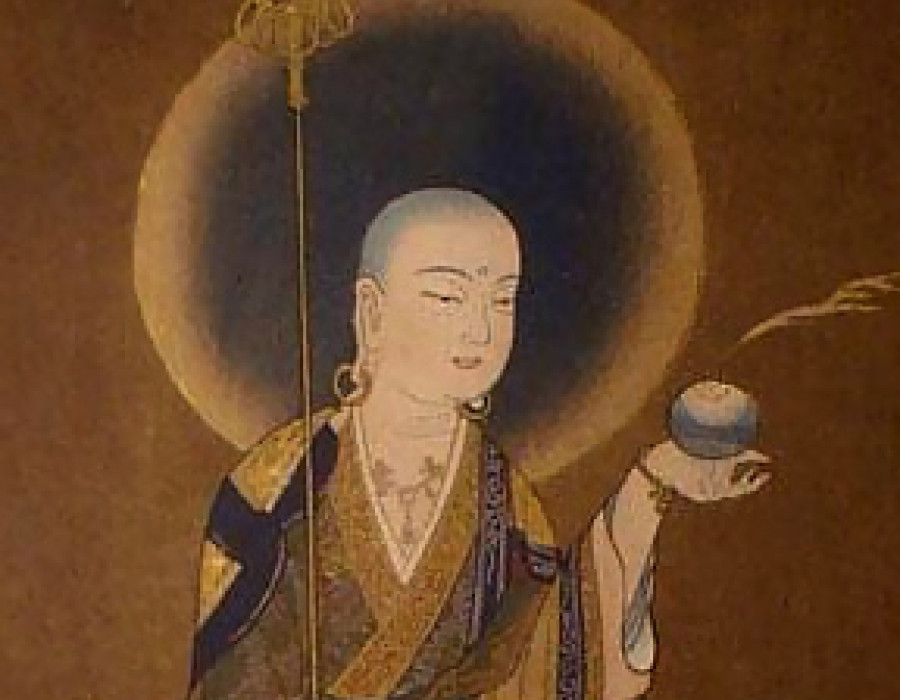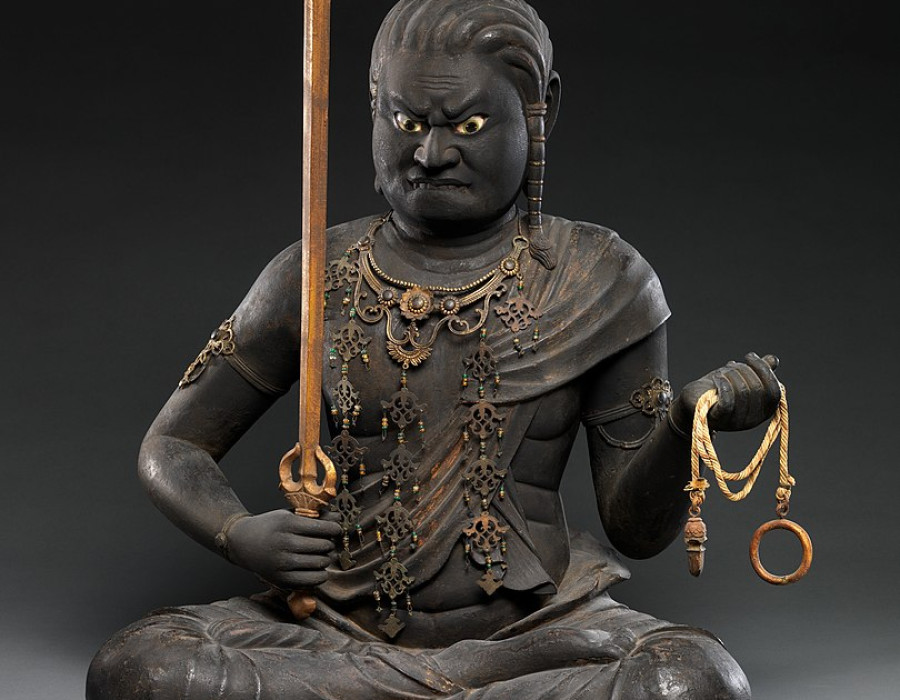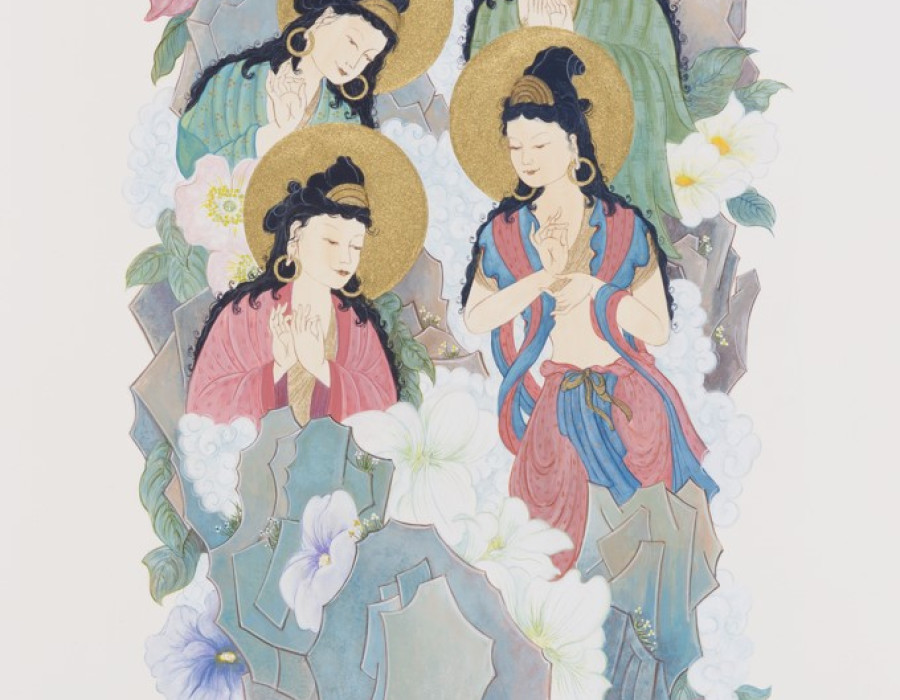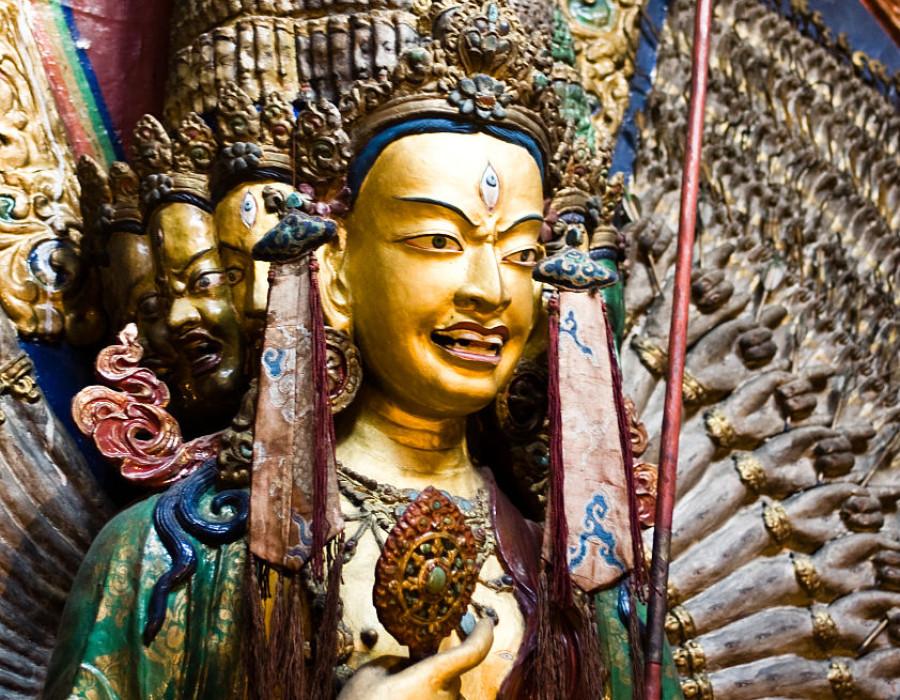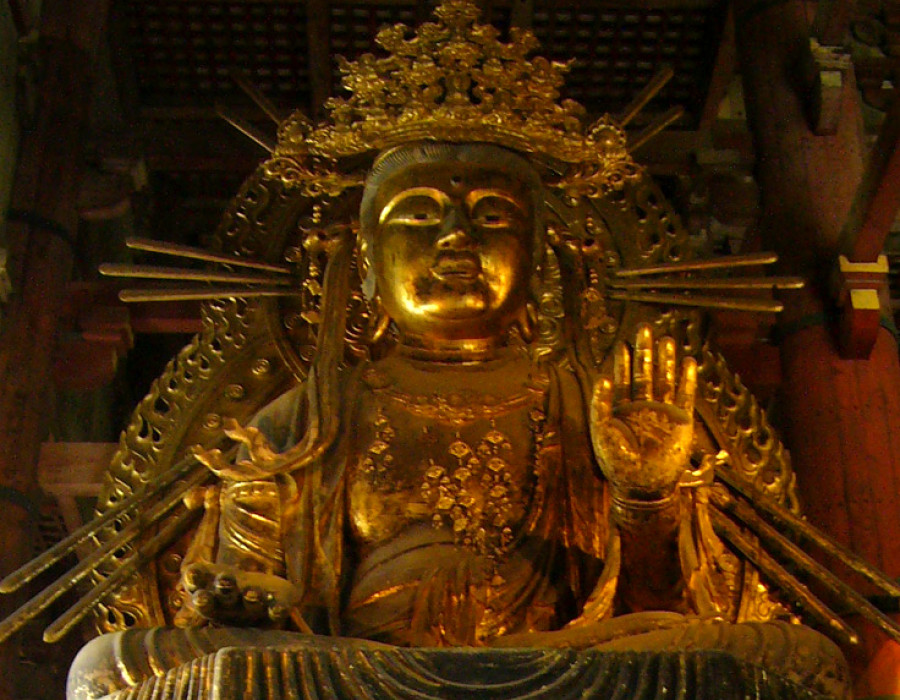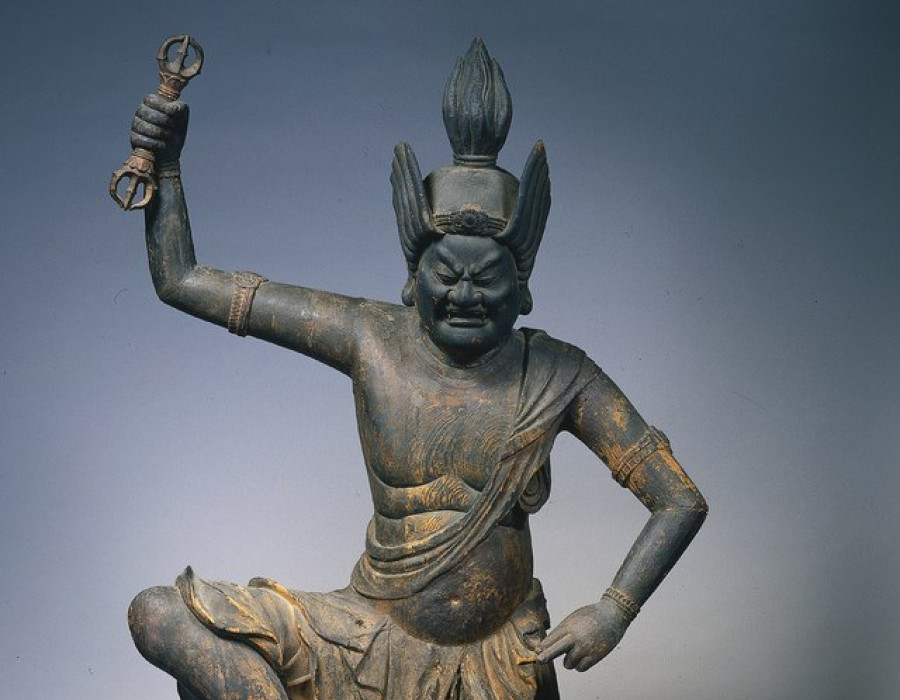
Martin Goodson
Amogasiddhi | The Five Wisdom Buddhas
The Way of Devotion
Amogasiddhi’s symbol is the moon, our satellite which reflects the sun’s rays even at night onto the earth. His season is Autumn, the season where life passes into death. His power overcomes envy for he does not grasp, even after the life that is now falling away. .

Modern statue of Amoghasiddhi in Renge-in Tanjō-ji, Kumamoto Prefecture, Japan.
The Five Wisdom Buddhas have a number of correspondences which are used in Tantric Buddhism for the purposes of meditation. Correspondences such as colour, season and direction, as well as teachings are to be considered as manifestations of the Principle of this particular Buddha.
The ritual use of these correspondences allows for the ‘waking up’ of the aligned consciousness that manifests this particular Buddha-principle.
In the case of Amogasiddhi his wisdom - principle is that of reflection-consciousness.

Amoghasiddhi, depicted with green skin
https://commons.wikimedia.org/wiki/File:Amoghasiddhi1.jpg#/media/File:Amoghasiddhi1.jpg
Recalling that these five Buddhas are aspects of the one True Body of the Dharma (Dharmakaya), Amogasiddhi is the principle of the Heart-Mirror which reflects things as they really are.
In Zen, perhaps the most famous example of this principle is summed up in the two verses which appear in The Platform Sutra in the chapter telling of the story of Hui-neng (jp. Eno Daikan), who became the Sixth Patriarch.
When the Fifth Patriarch was looking for a successor he set the challenge for each monk to write a verse that encapsulated his insight. Everyone assumed the head monk would be the successor and so didn’t bother to write a verse. However the head monk was not so sure of his own insight. So he wrote it up anonymously on a wall in the middle of the night:
This body is the Bodhi Tree*
The Heart is a bright mirror on a stand.
Carefully wipe the mirror moment by moment
So that no dust may alight on it.
*This is the name for the tree under which the Buddha attained Enlightenment.
Hui- neng, on hearing this verse also realised there was something missing, so he commissioned a matching verse by the side of the first one.
There is no Bodhi Tree
The bright mirror has no stand.
When there is nothing whatsoever,
What dust can alight where?

The Sixth Patriarch's Rice Mill, ink on paper, 10.8 x 16.7 cm, Shinwa-an Collection
https://commons.wikimedia.org/wiki/File:TheSixthPatriarch%27sRiceMill.jpg#/media/File:TheSixthPatriarch'sRiceMill.jpg
What we have here in our first verse is our daily life practice, which is to give myself away (‘I’ am the dust with my wants, picking and choosing etc.), wholeheartedly into what at this moment is being done anyway. So it is not that this first verse is incorrect, only that it lacks the penetrating insight into the nature of that ‘bright mirror’ - this is why the second verse compliments the first.
This power of reflective wisdom - the ‘bright mirror’ or also known as the ‘heart-mirror’ is called ‘mu-shin’ in Zen and is highly prized.
We may wonder that if we are to clean the mirror why it is that we then stick labels such as ‘Amogasiddhi’ or ‘reflective wisdom’ onto it? The answer lies in the tendency of ‘I’ to cling to one side or another - and in fact to see things as a series of binary or dualistic choices. Some people think to throw away all labels but then go around chanting ‘Mu, Mu, Mu’, or saying things like ‘Eveything is void!’ and suchlike. They may erroneously think that we can throw away the teachings, the images, the mantra, the robe and bowl and all practices and be free! For this sickness the teachings show that they, as relative truths, also contain within them absolute truth.
https://commons.wikimedia.org/wiki/File:Enhancedaluminumcoatedfirstsurfacemirroronanopticalflat.JPG#/media/File:Enhancedaluminumcoatedfirstsurfacemirroronanopticalflat.JPG
https://commons.wikimedia.org/wiki/File:Enhancedaluminumcoatedfirstsurfacemirroronanopticalflat.JPG#/media/File:Enhancedaluminumcoatedfirstsurfacemirroronanopticalflat.JPG
One of the highest truths in Mahayana Buddhism is that Samsara is Nirvana and that relative truth is also absolute truth and that there is not a hair’s breadth between them. This is why it is an error to throw everything out.
On the other hand, with the images and teachings and forms of practice ‘I’ can also cling to these too and so the medicine for this is the verse by Hui-neng which cleans all images away and leaves the heart empty.
Of the Five Skandhas, Amogasiddhi corresponds to the samskaras. These are the mental configurations that arise and reflect in the Heart-Mirror. Thus the heart is not separate from its reflections. It is these reflections that make known the mirror quality of reflection. After all, a reflection is always a reflection of something rather than nothing. In this we see the two sides are not apart but mutually arising, a part of dependent origination.
Amogasiddhi’s symbol is the moon, our satellite which reflects the sun’s rays even at night onto the earth. His season is Autumn, the season where life passes into death. His power overcomes envy for he does not grasp, even after the life that is now falling away. Thus his hand gesture (mudra) is that of fearlessness.
His mantra is:
oṃ amoghasiddhi āḥ hūṃ

